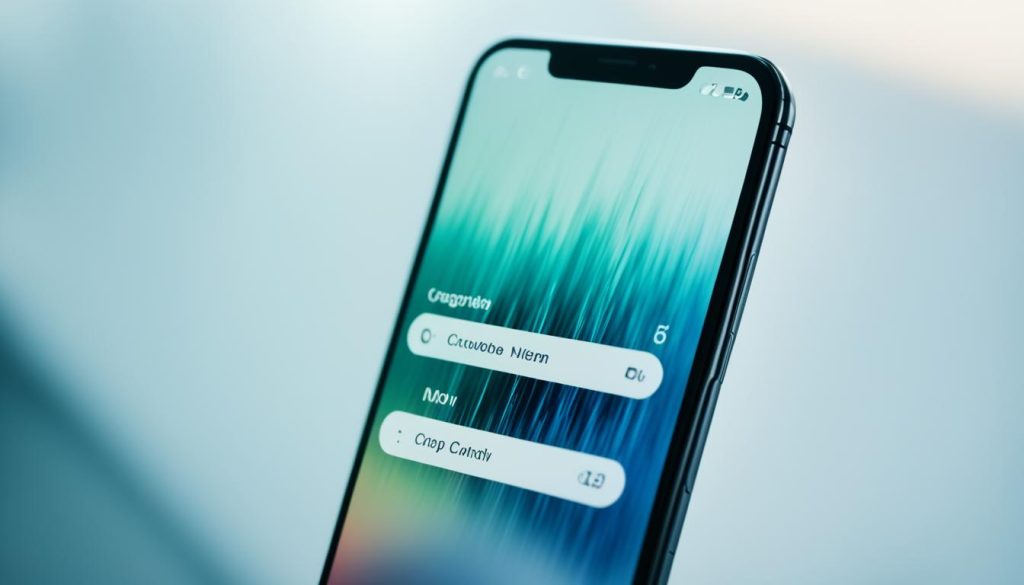SIP Protocol Errors and VoIP Issues can cause disruptions in call quality and connectivity. Understanding the source of these problems is crucial for effective troubleshooting. Common types of VoIP call quality issues include audio latency, jitter, and packet loss. These issues are often intertwined and can arise from network configuration issues or hardware malfunctions. By identifying and addressing these SIP Protocol Errors, you can enhance your VoIP call experience.
Key Takeaways:
- Troubleshooting VoIP problems requires addressing SIP Protocol Errors
- Common VoIP issues include audio latency, jitter, and packet loss
- SIP Protocol Errors can result from network configuration issues or hardware malfunctions
Understanding VoIP Call Quality Issues
VoIP call quality problems can be frustrating and disruptive to your communication. Issues such as echoing, popping noises, distortion, one-way audio, and dropped calls are common in the world of Voice over Internet Protocol (VoIP). It is essential to understand that these problems are often interconnected and rarely occur in isolation.
A number of factors can contribute to VoIP call quality problems. Audio latency, jitter, and packet loss are some of the key culprits. Audio latency refers to the delay in voice transmission, resulting in unnatural pauses or lags during a conversation. Jitter is the variation in packet arrival time, which can cause choppy or inconsistent audio. Packet loss occurs when packets of voice data fail to reach their destination, leading to gaps or distortion in the audio.
It is worth noting that a high-speed internet connection alone may not be enough to resolve these issues. Proper network configuration and hardware functionality play a significant role in ensuring optimal VoIP call quality. Without addressing these factors, you may continue to face VoIP call quality problems.
To give you a clearer picture of these issues, here are some examples:
- Noisy line and echoing: You might notice background noise or an echo of your own voice during a call. This can make conversations difficult and annoying.
- Distorted audio: The sound may become garbled or distorted, making it challenging to understand the other party.
- One-way audio: This occurs when only one party can hear the other, leading to a one-sided conversation.
- Dropped calls: Calls may disconnect unexpectedly, causing interruptions and frustration.
It is crucial to address these VoIP call quality problems to ensure clear and uninterrupted communication. In the next sections, we will explore troubleshooting methods for resolving SIP Protocol Errors and enhancing call quality by optimizing network configurations and addressing hardware issues.
Quote:
“Addressing VoIP call quality issues requires a holistic approach that involves both network configuration and hardware functionality. Don’t overlook these factors in your quest for high-quality communication.”
Troubleshooting Network Configurations
To fix SIP connection errors and improve VoIP call quality, it’s crucial to address network configurations. By allocating sufficient bandwidth exclusively for VoIP calls, you can ensure a smoother flow of voice data. This can be achieved through Quality of Service (QoS) configuration in your router settings. With QoS, you can prioritize VoIP packets over other data packets, minimizing latency and enhancing call quality.
To further optimize your VoIP network, here are some additional troubleshooting tips:
- Minimize network congestion: Reduce the number of devices on your network and prioritize VoIP traffic over other internet activities.
- Avoid WiFi for VoIP calls: Wired connections tend to be more stable and reliable than wireless connections, reducing the chances of call drops and audio interruptions.
Proper network configuration plays a vital role in resolving many SIP Protocol Errors and ensuring high-quality VoIP calls. By implementing these troubleshooting techniques, you can enhance the overall performance of your VoIP network and provide an exceptional communication experience.
Example:
“By allocating dedicated bandwidth for VoIP calls and optimizing network settings, you can effectively troubleshoot SIP connection errors and improve the quality of your VoIP calls. Prioritizing VoIP packets through Quality of Service (QoS) configuration ensures a smoother flow of voice data, minimizing latency and enhancing call quality. Additionally, minimizing network congestion and avoiding WiFi for VoIP calls contribute to a more stable and reliable VoIP network.”
Troubleshooting Network Configurations
| Troubleshooting Tip | Description |
|---|---|
| Allocate sufficient bandwidth for VoIP calls | Ensure QoS configuration in your router settings to prioritize VoIP packets and minimize latency. |
| Minimize network congestion | Reduce the number of devices on your network and prioritize VoIP traffic over other internet activities for smoother call quality. |
| Avoid WiFi for VoIP calls | Opt for wired connections to reduce the chances of call drops and audio interruptions. |
Addressing Hardware Issues
Hardware malfunctions can greatly contribute to VoIP call quality problems. Issues with routers, network devices, and headsets can disrupt the flow of voice data, resulting in call drops and poor call quality. To ensure high-quality VoIP calls, it is essential to address and resolve hardware-related issues.
Firstly, make sure that your hardware is functioning properly and is compatible with your VoIP software. Check for any firmware updates or driver issues that may be affecting the performance of your hardware components. It is recommended to consult the manufacturer’s website or contact their support for troubleshooting guidance.
Secondly, using professional-grade headsets that are recommended by your VoIP provider can greatly minimize audio distortion and one-way audio problems. These headsets are specifically designed for VoIP calls and offer superior sound quality and microphone performance. Investing in quality headsets can significantly enhance the overall call experience.

Common Hardware Issues and Solutions
| Hardware Issue | Solution |
|---|---|
| Router malfunctions | Restart the router and update firmware if available. If the issue persists, consider replacing the router. |
| Network device compatibility issues | Ensure that the network devices you are using are designed to handle VoIP traffic. Opt for devices that support Quality of Service (QoS) for better voice prioritization. |
| Headset audio distortion | Use professional-grade headsets recommended by your VoIP provider. Check for any loose connections and update headset drivers if necessary. |
By addressing hardware-related issues, you can optimize your VoIP call quality and enjoy clear and uninterrupted conversations.
Resolving SIP Header Errors
SIP header errors can significantly impact call quality and lead to disruptions during VoIP communication. These errors are often indicated by SIP error codes, which provide valuable information about the current call status. Understanding these codes and effectively troubleshooting them is crucial to resolving SIP header errors and improving call stability. By focusing on key areas such as network configuration, user authentication, and routing, you can address these errors and ensure a smooth and reliable VoIP experience.
Checking Network Configuration
One of the first steps in resolving SIP header errors is to thoroughly examine your network configuration. Misconfigurations or conflicts in settings can contribute to these errors and result in call quality issues. Check your router settings, firewall configurations, and any other network devices to ensure they align with the recommended guidelines provided by your VoIP service provider. By verifying and adjusting these settings, you can eliminate potential sources of SIP header errors and improve call stability.
Verifying User Authentication
User authentication plays a pivotal role in maintaining the integrity of VoIP calls. Incorrect or incomplete authentication can lead to SIP header errors and compromised call quality. Ensure that all users are properly authenticated and authorized to make VoIP calls within your network. This includes verifying usernames, passwords, and any other credentials required for authentication. By enforcing a robust and secure authentication process, you can reduce the likelihood of SIP header errors and strengthen call stability.
Ensuring Proper Routing
The routing of VoIP calls impacts their quality and reliability. Incorrect routing can result in SIP header errors and cause disruptions during communication. It is crucial to review and validate your call routing configurations to ensure that calls are being properly directed to their intended destinations. This includes verifying routing rules, destination addresses, and any other parameters related to call routing. By optimizing your call routing, you can minimize the occurrence of SIP header errors and enhance the overall quality of your VoIP calls.
Resolving SIP header errors requires a methodical approach that addresses both network-level and user-level factors. By checking network configuration, verifying user authentication, and ensuring proper call routing, you can effectively resolve these errors and enjoy improved call stability and quality in your VoIP communication.
Tips for Call Quality Enhancement
In addition to troubleshooting specific SIP Protocol Errors, there are general tips that can help enhance VoIP call quality. By implementing these recommendations, you can ensure a seamless and high-quality VoIP communication experience.
1. Ensure a Stable Internet Connection
An unstable internet connection can result in VoIP call quality problems such as audio interruptions and delays. To mitigate this issue, make sure you have a reliable and high-speed internet connection. Connect your VoIP device directly to the router using an Ethernet cable for optimal performance.
2. Position Network Routers Strategically
The placement of your network routers can significantly impact the signal strength and call quality. Position the router in a central location, away from obstacles and interference-causing devices such as microwave ovens or cordless phones. This ensures maximum coverage and minimizes signal degradation.
3. Adjust Settings for Silence Suppression and Voice Activity Detection
VoIP systems often include features like silence suppression and voice activity detection, which can optimize bandwidth usage and improve call quality. Adjust these settings based on your preference and the specific requirements of your VoIP service provider.
4. Prioritize VoIP Traffic in Network Configuration
To ensure smooth and uninterrupted VoIP calls, prioritize VoIP traffic over other data packets on your network. This can be done by configuring Quality of Service (QoS) settings in your router. Prioritizing VoIP traffic prevents congestion and guarantees a consistent flow of voice data.
5. Implement Firewall and Security Measures
Protecting your VoIP network from unauthorized access and potential security threats is crucial for maintaining call quality. Set up a firewall and enable security features offered by your VoIP service provider to safeguard your network and ensure the confidentiality of your communications.

“By following these tips, you can optimize your VoIP call quality and enjoy crystal-clear voice communications without interruptions.”
– John Johnson, VoIP Expert
Common SIP Response Codes
SIP response codes play a crucial role in troubleshooting VoIP problems. They provide valuable information about the status of a call and can assist in identifying and resolving SIP Protocol Errors. Familiarizing yourself with these codes and understanding their implications can help you navigate through VoIP issues effectively.
Informational Codes (1xx)
Informational codes are provisional responses that indicate that the request has been received and understood. They are often used to convey additional information about the call or provide further instructions. These codes do not guarantee the success or failure of the call but serve as indicators of ongoing processes.
Success Codes (2xx)
Success codes indicate a successful completion of a request. When you encounter a success code, it means that the call has been completed successfully, and all necessary conditions for the call to be established have been met.
Redirection Codes (3xx)
Redirection codes indicate that further action is required to complete the call. These codes provide information on different available options for reaching the desired destination. They indicate that the call needs to be redirected to a different address or resource to proceed.
Client Error Codes (4xx)
Client error codes indicate that there was an error in the request made by the client. These codes are often caused by incorrect user input or invalid request syntax. Troubleshooting client error codes involves checking the user’s configuration, authentication, or addressing issues.
Server Error Codes (5xx)
Server error codes indicate that there was an error on the server side while processing the request. These errors are typically caused by server malfunctions, network issues, or system overload. Troubleshooting server error codes may require contacting your VoIP service provider or checking your own server configuration.
Global Failure Codes (6xx)
Global failure codes indicate that the call could not be completed and is considered a failure. These codes generally signify issues that prevent the call from being processed or connected. Troubleshooting global failure codes may involve checking network connectivity, verifying user credentials, or addressing systemic issues.
Understanding the meaning of these response codes is essential for troubleshooting SIP Protocol Errors and resolving VoIP problems. By correctly interpreting these codes, you can gain valuable insights into the status of your calls and take appropriate actions to ensure optimal call quality and connectivity.
| Response Code | Description |
|---|---|
| 1xx | Informational codes: Provisional responses, indicating ongoing processes. |
| 2xx | Success codes: Indicate a successful completion of a request. |
| 3xx | Redirection codes: Indicate the need for further action to complete the call. |
| 4xx | Client error codes: Indicate an error in the client’s request. |
| 5xx | Server error codes: Indicate an error on the server side. |
| 6xx | Global failure codes: Indicate a failure to complete the call. |
Benefits of SIP and VoIP
Despite the challenges associated with SIP Protocol Errors and VoIP issues, adopting SIP and VoIP technology offers numerous benefits for businesses. Cloud-based phone systems powered by VoIP are simpler, more efficient, cost-effective, and secure compared to traditional phone systems. By troubleshooting and addressing common VoIP issues, businesses can unlock the full potential of SIP and VoIP technology and enjoy improved communication capabilities.
Here are some key advantages of SIP and VoIP:
- Simplicity: SIP and VoIP streamline communication processes, allowing businesses to integrate voice, video, and messaging services into a single platform. This simplifies the management and maintenance of communication systems.
- Efficiency: VoIP enables businesses to make and receive calls over the internet, eliminating the need for traditional phone lines. This improves efficiency by reducing costs and increasing flexibility.
- Cost-effectiveness: With VoIP, businesses can significantly reduce their communication expenses, especially for long-distance and international calls. Calls between VoIP users are typically free, and international calls are more affordable compared to traditional phone services.
- Security: VoIP systems offer robust security features, including encryption and authentication protocols, to protect sensitive business communications. This ensures that voice data remains confidential and secure.
By harnessing the power of SIP and VoIP, businesses can optimize their communication infrastructure, improve collaboration, and streamline operations. Troubleshooting common VoIP problems is essential for maximizing the benefits of this transformative technology.
| Advantages of SIP and VoIP |
|---|
| Simplicity |
| Efficiency |
| Cost-effectiveness |
| Security |
(Source: https://seowriting.ai/32_6.png)
Conclusion
SIP Protocol Errors and VoIP issues can be a source of frustration for businesses, but they are not insurmountable. By understanding the common causes of VoIP call quality issues and implementing the appropriate solutions, you can address these challenges effectively. Remember to prioritize network configuration to allocate sufficient bandwidth for VoIP calls and minimize network congestion. Additionally, address hardware problems promptly by ensuring compatibility and functionality. Understanding and interpreting SIP response codes will also help you troubleshoot and resolve SIP header errors.
By taking these measures, you can optimize your VoIP communication and enjoy the benefits of SIP and VoIP technology. Cloud-based phone systems powered by VoIP offer simplicity, efficiency, cost-effectiveness, and enhanced security compared to traditional phone systems. With reliable and high-quality VoIP communication in place, you can improve your overall communication capabilities and streamline your business operations.
Don’t let SIP Protocol Errors and VoIP issues hinder your business’s communication. Apply these troubleshooting strategies and network optimization techniques to ensure smooth and uninterrupted VoIP calls. By adopting VoIP technology and addressing common VoIP problems, your business can thrive in today’s connected world.
FAQ
What are common types of VoIP call quality issues?
Common types of VoIP call quality issues include audio latency, jitter, and packet loss.
What can cause VoIP call quality problems?
VoIP call quality problems can be caused by network configuration issues and hardware malfunctions.
How can I troubleshoot network configurations to enhance VoIP call quality?
To troubleshoot network configurations, allocate sufficient bandwidth for VoIP calls through Quality of Service (QoS) configuration in your router settings, minimize network congestion, and avoid using WiFi for VoIP calls.
How can I address hardware issues that may affect VoIP call quality?
To address hardware issues, ensure that your routers, network devices, and headsets are functioning properly and compatible with your VoIP software. Consider using professional-grade headsets recommended by your VoIP provider.
How can I resolve SIP header errors?
To resolve SIP header errors, check the network configuration, verify user authentication, and ensure proper routing.
What are some tips for enhancing VoIP call quality?
Tips for enhancing VoIP call quality include ensuring a stable internet connection, strategically positioning network routers, and adjusting settings related to silence suppression and voice activity detection.
What are common SIP response codes?
Common SIP response codes include informational codes (1xx), success codes (2xx), redirection codes (3xx), client error codes (4xx), server error codes (5xx), and global failure codes (6xx).
What are the benefits of SIP and VoIP?
Benefits of SIP and VoIP include simpler, more efficient, cost-effective, and secure cloud-based phone systems compared to traditional phone systems.
How can I fix SIP Protocol Errors and VoIP issues?
You can fix SIP Protocol Errors and VoIP issues by proper troubleshooting, network optimization, addressing hardware problems, and interpreting SIP response codes.
